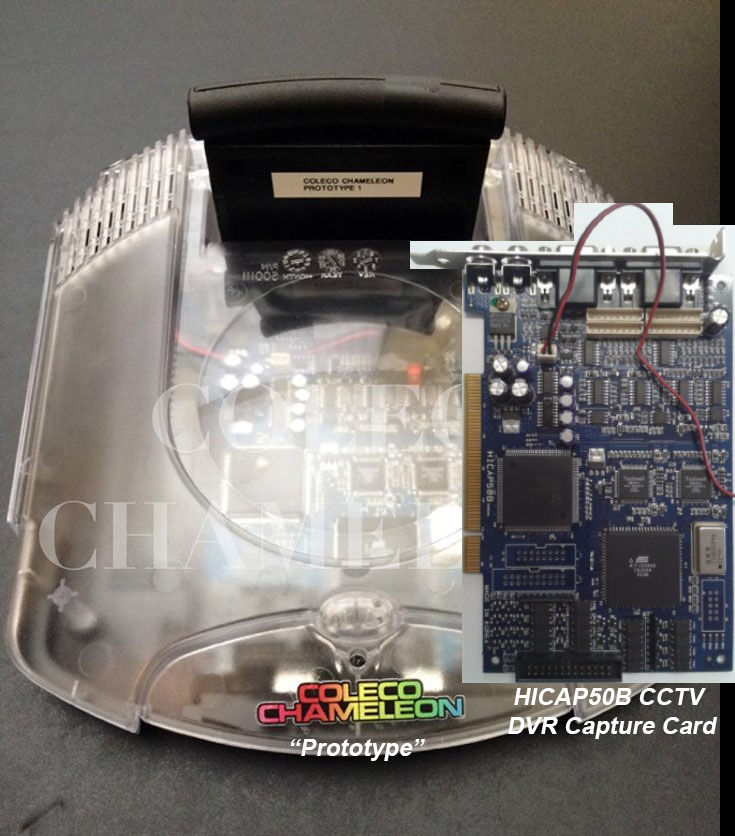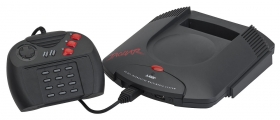
Oral Cameras and Lip Service - The Strange Journey of the Atari Jaguar Casing
It’s the 30th anniversary of one of the biggest failures in gaming; The Atari Jaguar. At least, it is for our friends in the USA: the UK didn’t actually see any consoles until June 1994, but that’s kind of a moot point seeing as only about six people bought them here anyway. The Jaguar was the final nail in Atari’s coffin and saw the company name subsequently get passed around more times than your aunt Maureen’s holiday snaps at a barbeque, finally arriving with Infogrames in 2001, which continues to use the brand to this day, despite a near-miss bankruptcy filing in 2013.
All of this is to say that the history of the various companies called Atari is a long and complicated one. It’s a tale for another day, though, as that’s not what I’d like to talk about now. Today, I’d like to discuss the strange (and still quite tragic) story of what happened to the injection moulds and tooling for the shell of the Jaguar. This might seem like a rather uninteresting thing to be discussing, but bear with me dear reader, as this seemingly banal history tale is a rollercoaster ride that demands a seatbelt to be applied, and all limbs kept safely within the vehicle.
The Jaguar was, by Atari’s standards, a huge flop. By the time 1996 rolled in, the company had sold just 125,000 consoles, with an inventory of around 100,000 unsold. To put this in perspective, the Sony PlayStation had sold well over 2,000,000 units worldwide by this point. To make matters worse, retailers were not only struggling to sell their stock, but some of them were actually trying to return it back to Atari. Electronics Boutique, at the time the largest gaming retailer in the UK, were so disappointed with the lack of sales over the lucrative Christmas period that in January 1996 it told Atari it planned to consolidate all remaining stock and return it as unsold. Atari refused to accept this until a court ruling forced them to the following year, but it was indicative of the writing on the wall: it was clear that the Jaguar wasn’t going to make any more money, and with no money to develop a sequel, it was impossible to see how Atari would be able to remain in the console business.

The controller might have been nearly as large as the console itself, but the Jaguar was a lovely looking console.
Rumour has it that around the same time, Atari President and CEO Sam Tramiel had spoken with executives at hard drive manufacturer JTS, asking if they wanted to merge the companies. Whether or not that rumour is true, we do know that Atari’s final shareholder meeting on the 30th of July 1996 resulted in a vote to do just that, and thus the fate of the Atari Jaguar fell to a relatively small computer hardware company with no experience in gaming. John Skruch was transferred from the former Atari to JTS, charged with deciding exactly what to do with the former gaming giant’s stock and name. What would follow is one of the most bizarre stories in gaming history.
Skruch had managed to sell a glut of backlogged machines at a cut price to a mail order firm, but this was not a hugely profitable endeavour, with the company paying just a dollar per game and twenty dollars per machine. This helped get rid of the stock, but didn’t balance the books much. Individual IPs for games were sold to a number of companies bit by bit, until eventually he managed to get Hasbro Interactive to buy the remaining IPs and the Atari name for just $5,000,000 - a tiny fraction of the $240,000,000 that Jack Tramiel had paid Warner in 1984 to buy the Atari name.

JTS - the new owner of Atari in 1996.
At the same time as all of this was going on, engineer Steve Mortensen was working on moulded cases for his HotRod range of oral cameras. These were analogue devices sold by Mortensen’s company ‘Imagin Systems Corporation’ and used by dentists to take images of patients’ teeth and mouths. Whilst talking with a contact at his moulding company, it was pointed out how it actually looked a little like the Jaguar, the cases of which were made by the same company. This chance discussion led to Mortensen being introduced to Skruch at JTS, who sold him the moulding, now knowing that there would be no more Atari hardware to be made, rendering the moulds useless to his employer. This was before the sale to Hasbro, but it’s likely that Skruch was realistic enough to know that there would be no other way to get rid of such a bulky and proprietary asset other than sending it to landfill, something that Atari had to resort to at least once before in its troubled history.
In an interview with Youtuber Adam Koralik, Mortensen advised that he had paid around $1800 in all for the tooling, and this was adapted for the HotRod Delux model. The cameras sold for around $2000, and injection moulding is notoriously expensive, so this was something of a bargain price for a case that was perfect for his needs. For JTS, it represented a way of disposing of a bulky and heavy asset that the company no longer had a use for. A few minor tweaks and the housing for the new camera was created, and small-scale production started, with devices being pitched to dentists across the US.
Moulds for the console itself, the cartridges, and the ill-fated CD-ROM add-on were all purchased, but not the controllers. An actual cartridge was planned to be used for storage of images, and ideas for possibly using the CD drive moulds for microscopes but this never came to anything in the end. Sadly, the HotRod became obsolete before it went into mass production as USB devices started to come in that would interface with standard computers. Analogue cameras weren't necessary in an increasingly digital world, so Imagin shifted focus and the Jaguar moulds were consigned to unrequired inventory once again. It sold some of the unused shells that had been made for the cameras to Atari fans in order to make space and then moved on to other products. The company continues to enjoy success in the industry to this day, and considers the Jaguar an important part of its history, even though the device wasn’t ultimately a huge hit.

Promotional leaflet for the HotRod Imagin.
That could have been where the story ended, and for the best part of 20 years, it was. In 2015, however, a new console was announced by former podcast host and magazine editor Mike Kennedy. Kennedy’s console, dubbed the Retro Video Game System or RVGS for short, was to be crowd-funded via Indiegogo. It was meant to be a new cartridge-based system, designed to appeal to retro gamers who wanted the feel of yesteryear. Not only would it feel like those old consoles though, it was designed to look like them, as Kennedy had purchased the no-longer-required moulds from Imagin in order to make casing for his console.
The fundraising didn’t raise enough, and Kennedy went looking for other options, returning later in the year to announce a deal with one of Atari’s former competitors Coleco. Coleco was at that point owned by Hasbro, who had itself owned the Atari brand name at one point, and was to feature its branding on the machine, which would be henceforth known as the Coleco Chameleon. Kennedy’s company would be dubbed Retro Video Game Systems in order to keep the RVGS acronym alive. Things were looking up and it seemed that we might see the famous Jaguar casing used in a new console, albeit one dubbed with the name of a rival manufacturer from the early days of home gaming.
Sadly, a tragic ending befell the console, with rather disturbing allegations being levelled at the creators. In February 2016, the Chameleon was shown off at the New York Toy Fair, an industry event showcasing new consumer entertainment and toys. A planned Kickstarter campaign for the console to raise final development funds was due a few weeks later, but this was delayed, and RVGS took to X (then Twitter) to explain the delay, complete with images of the demonstrated prototype.

Image of the Coleco Chameleon with the suspected capture card shown alongside.
Readers on the AtariAge forums noticed that the console had a clear shell, and the hardware inside looked unusual for a videogame system. In fact, it was determined that inside was a video capture card, and from this, the assumption was made that the console wasn’t finished, and in fact pre-recorded video was being shown at the expo rather than any sort of real games. Whilst it was never determined if this was the case or not, the company disappeared off the internet immediately after these allegations, and Coleco officially announced that it was parting ways with Kennedy’s firm.
The console never saw the light of day, but a number of commenters have since stated concern at how it was handled, with many feeling that money from investors was not used properly, and some even suggested embezzlement. Again, it’s not been possible to gather concrete confirmation or denial of these allegations, but what we do know for certain is that the moulds changed hands once again after this debacle, with a purchase being made by AtariAge admin Albert. It’s not clear if he purchased them for himself or for AtariAge, but it does appear that they are being kept safe now by someone who has an interest in preserving the history of gaming.

Sadly, neither the Jaguar nor Rumbelows lasted much longer after the publication of this advert.
An interesting footnote to all of this is that the AtariAge website itself was purchased in September 2023. The new owner is none other than Atari SA, the publisher formerly known as Infogrames. As mentioned earlier, it had purchased the rights to the Atari name and some of the IPs from Hasbro in the early 2000s. The firm now publishes exclusively under the Atari brand, so it makes sense for it to acquire one of the foremost resources of historical information for the name it acquired. If Albert did indeed purchase the moulds for AtariAge, then it could mean that Atari now owns the moulding for the Jaguar once again, and with the 30th anniversary upon us, what better time to release a Jaguar 2? Wishful thinking on my part for sure, but I’ll leave you to ponder that rather unlikely possibility and let me know in the comments what a terrible idea it would be!









COMMENTS
Acelister - 03:11pm, 5th December 2023
Who knew that someone would be talking about Rumbelows in 2023.